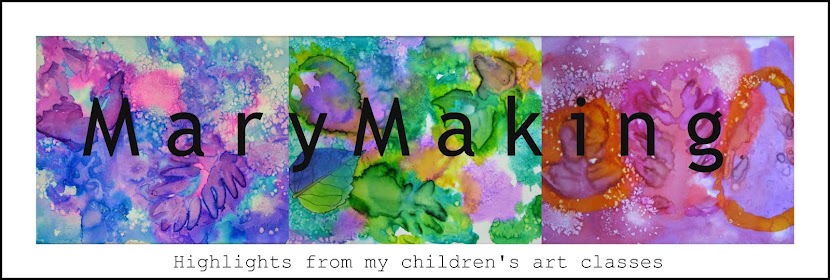Abby, 3rd grade
Fiona, 2nd grade
Maggie, 3rd grade
Izzy, 1st grade
Ella, 2nd grade
Kate, kindergarten
Mia, 2nd grade
Sydney, 3rd grade
Calvin, 3rd grade
The objective of this lesson for my Observational Art Lab students was to show them that drawing objects didn't have to be intimidating, it was all a matter of breaking them down into a series of shapes and lines . I was inspired by these wonderful tin can drawings done by 1st graders from The Art Room and these autumn themed still lifes in Arts and Activities Magazine.I chose these random objects and put them in the center of our tables. I pointed out that these containers shared the common element of ellipses. And I had them observe that the bottoms of these objects were curved rather than flat which would make a more 3 dimensional drawing. After each pencil drawing was gone over in Sharpie, the children used chalk pastels and charcoal to add color and shadow. I gave them free reign with color choices for their table and watercolor backgrounds. I was worried they might find this lesson "ho-hum" but these kids are great about diving into any lesson with enthusiasm.












































